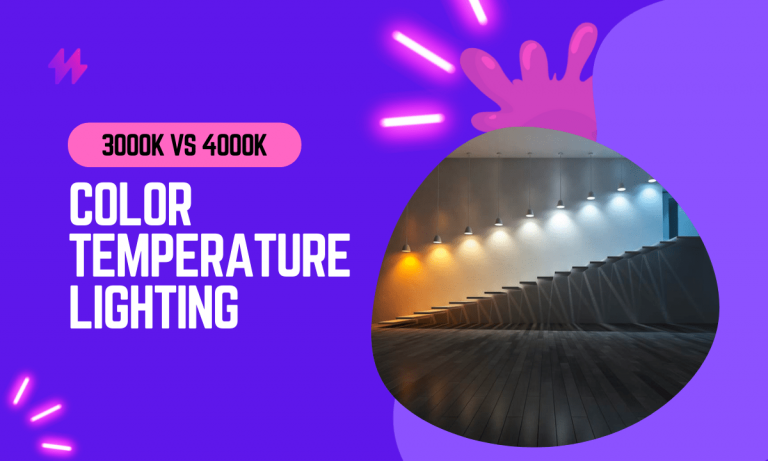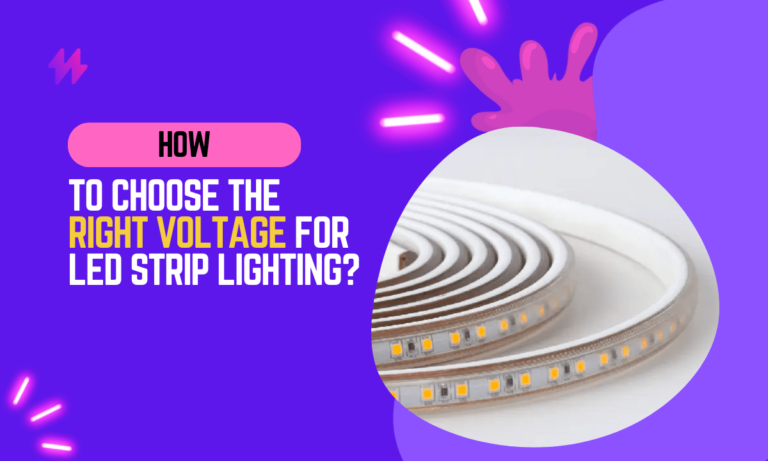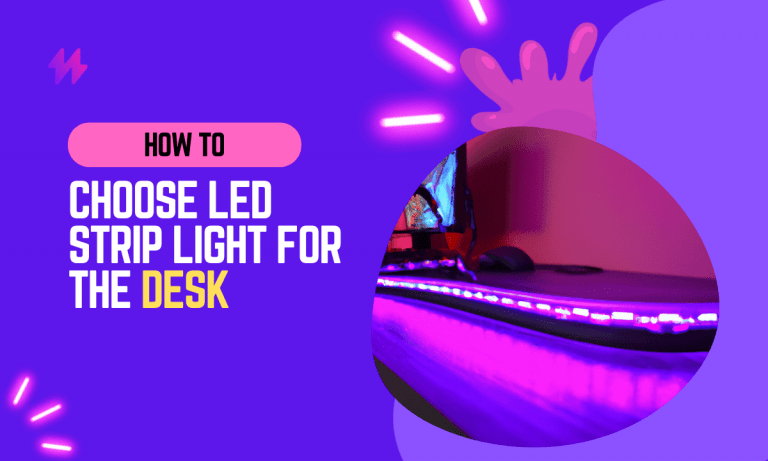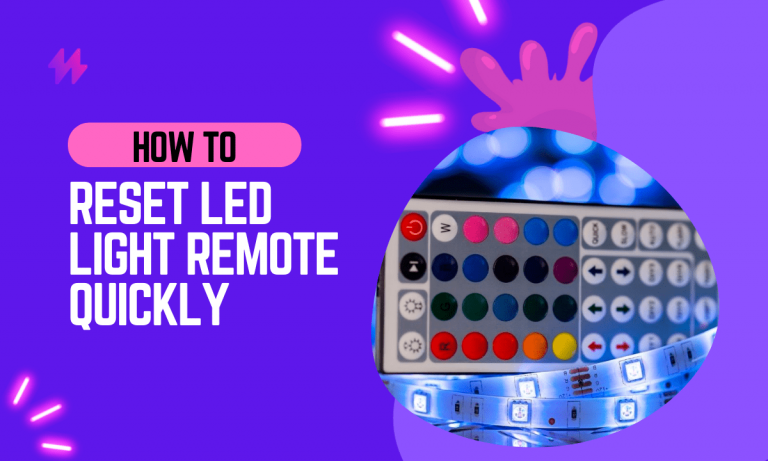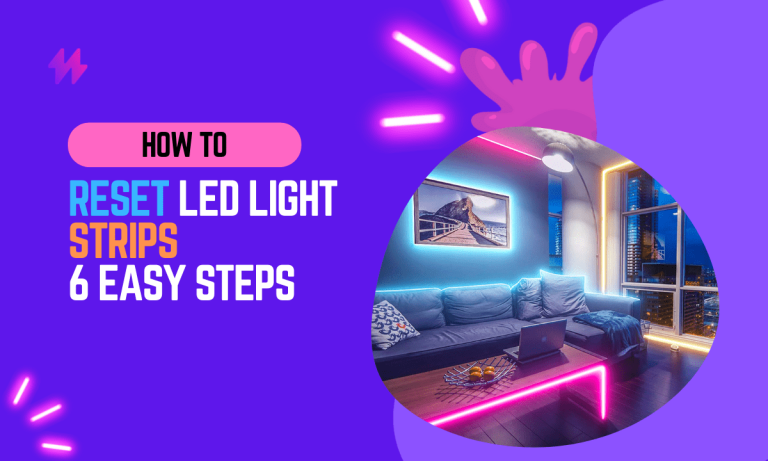Which is The Best Light for Plant Growth?
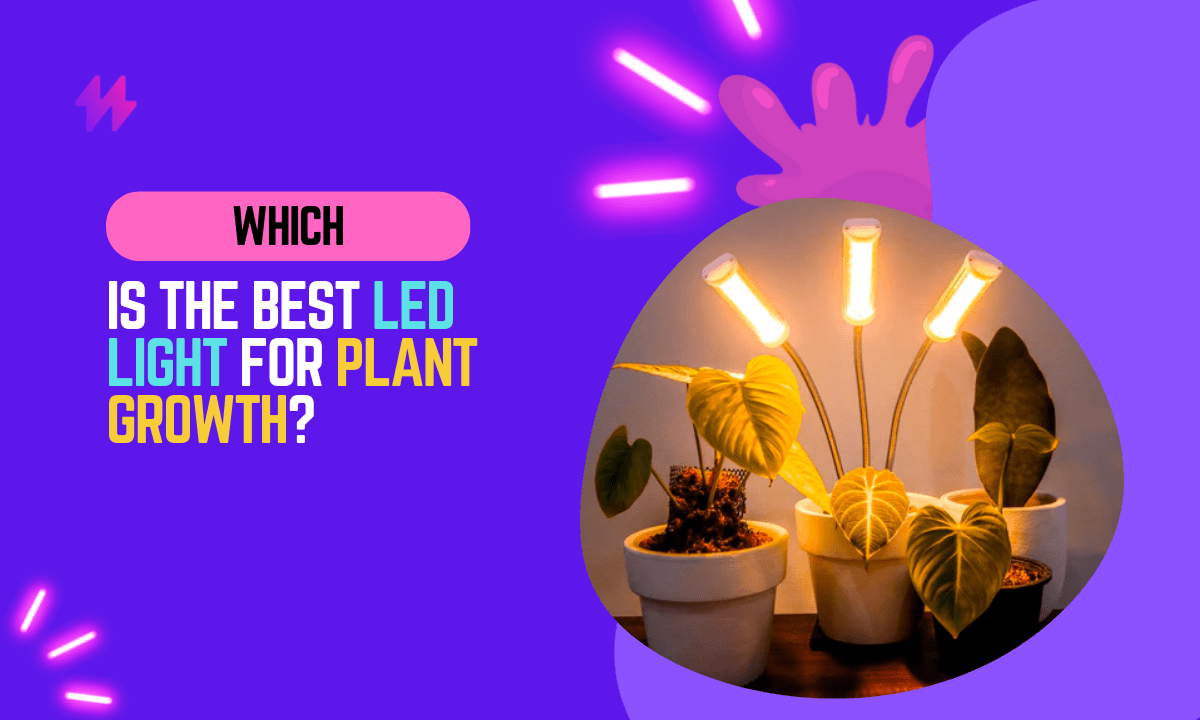
Do you want to grow beautiful, healthy plants? If so, you need to make sure they have the best light for plant growth. The type of light that plants need depends on the plant species, but in general, plants need bright, indirect light.
There are many different types of grow lights available on the market, so it can be difficult to know which one is right for you. In this article, I will discuss the different types of grow lights and help you choose the best one for your plants.
I have been working with LED lights for over 10 years. I have worked with a variety of different plants, and I have learned a lot about the best lighting conditions for each type of plant. In this article, I will share with you and help you choose the best light for your plants.
Plants need light to grow, and the type of light that plants receive can have a significant impact on their growth and development. Some plants need more light than others, and the intensity, duration, and quality of the light all play a role in how well a plant grows.
In this article, we will discuss the different types of light that plants need, how to choose the best light for your plants, and how to create a lighting setup that will help your plants thrive.
To ensure your plants thrive, it’s essential to match them with the right growing light. For house plants, especially low-light plants, consider utilizing LED bulbs or fluorescent light as effective light sources that cater to their specific needs.
Best Light Types for Plant Growth: Discover Which Is the Best Light for Plant Growth
There are three main types of light that plants need:
To ensure your plants thrive, it’s essential to match them with the right growing light. For house plants, especially low-light plants, consider utilizing LED bulbs or fluorescent light as effective light sources that cater to their specific needs. There are three main types of light that plants need: natural light, artificial light, and full spectrum light. Different types of plants, such as flowering plants and leafy greens, may require specific light settings to optimize their growth and health. Choosing the right grow bulbs for your specific plant areas can enhance light absorption and improve overall plant health. Understanding the light requirements of your plants can help in selecting the great grow light that meets their needs throughout the plant growth cycle.
- Photosynthetically Active Radiation (PAR): This is the light that plants use to photosynthesize. PAR light is measured in micromoles per square meter per second (μmol m-2 s-1).
- Ultraviolet (UV) light: UV light is a type of electromagnetic radiation that is invisible to the human eye. UV light can be harmful to plants, but it is also essential for some plant processes, such as photosynthesis and the production of vitamin D.
- Infrared (IR) light: IR light is a type of electromagnetic radiation that is also invisible to the human eye. IR light can be beneficial for plants, as it can help to warm them and promote growth.
Selecting the Optimal Plant Grow Light: Understanding Grow Light Types
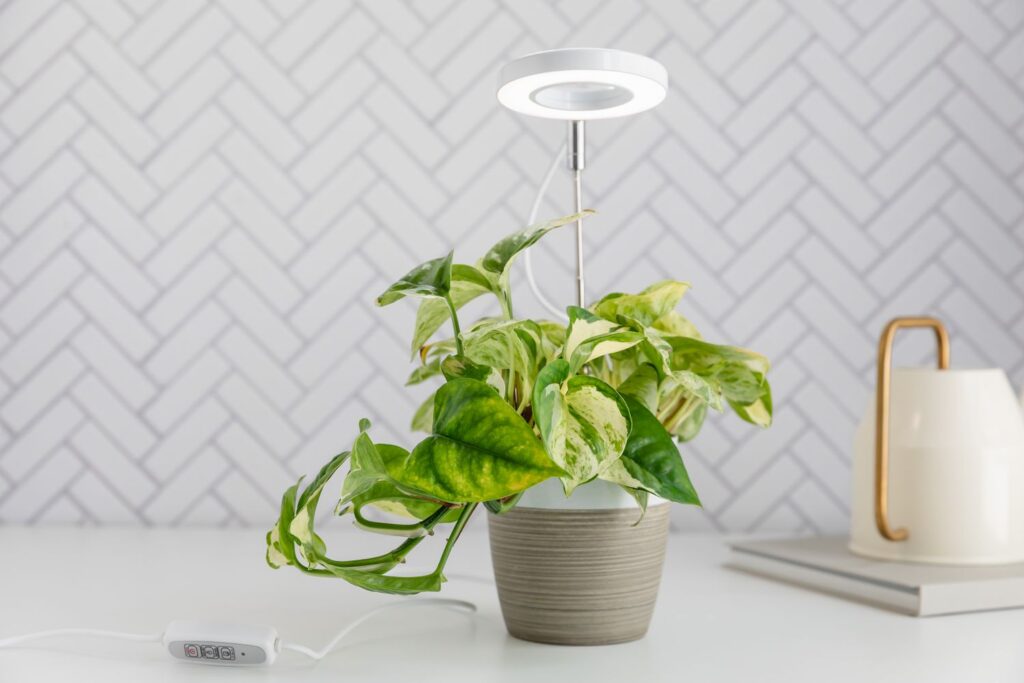
The best light for your plants will depend on the type of plant, the climate, and the location of your plants.
For indoor plants, you will need to choose a grow light that emits the correct amount of PAR light.
The intensity of the light will also need to be adjusted depending on the distance between the light and the plant.
For outdoor plants, you will need to consider the amount of natural sunlight that your plants will receive. If your plants will not be getting enough sunlight, you will need to supplement their light with a grow light.
The climate will also play a role in the type of light that you need for your plants. In warmer climates, you may need to use a light that emits less heat, as this can damage plants.
To ensure your plants get the best care, thoroughly research the specific plant variety you’re working with. Utilizing high-quality grow bulbs designed for different growth stages can significantly boost light absorption and, consequently, the overall health of your plants, including flowering plants and tomato plants.
Designing an Optimal Lighting Setup for Your Plants
Once you have chosen the best light for your plants, you will need to create a lighting setup that will provide your plants with the right amount of light.
For indoor plants, you will need to place your grow light at the correct distance from the plants. The distance between the light and the plants will depend on the intensity of the light.
For outdoor plants, you will need to choose a location that receives the correct amount of sunlight. If your plants are not getting enough sunlight, you will need to supplement their light with a grow light.
Once you have chosen the best light for your plants, you will need to create a lighting setup that will provide your plants with the right amount of light. For indoor plants, you will need to place your grow light at the correct distance from the plants. The distance between the light and the plants will depend on the intensity of the light. For outdoor plants, you will need to choose a location that receives the correct amount of sunlight. If your plants are not getting enough sunlight, you will need to supplement their light with a grow light. In addition to selecting the right size grow light, you should consider using full-spectrum bulbs that mimic natural light, which can promote healthier foliage growth. Choosing the right grow light bulb tailored for your specific plant areas can make a significant difference in your plants’ overall health and growth cycle.
Expert Tips for Thriving Plants: Growing with LED Lights
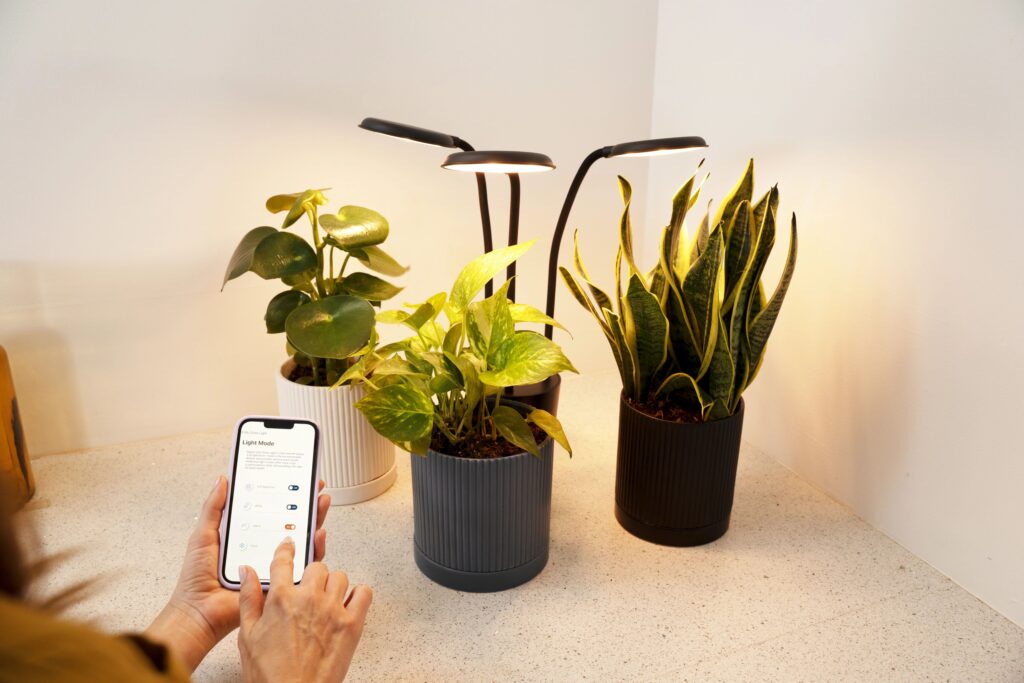
Here are a few tips for growing plants with light:
When selecting the appropriate lighting for your plants, consider the light bulb type that meets your plants’ various needs, such as full spectrum light for the healthiest growth. Using specifically designed growing lights can enhance light distribution and improve the overall health and growth of different types of plants, whether they are leafy greens or pot plants.
- Start with healthy plants: If your plants are not healthy, they will not be able to photosynthesize properly and will not grow well.
- Provide the right amount of light: Make sure that your plants are getting the right amount of light, as too much or too little light can damage them.
- Rotate your plants regularly: Rotating your plants will help to ensure that all sides of the plants receive the same amount of light.
- Water your plants regularly: Watering your plants regularly will help to keep them hydrated and healthy.
- Fertilize your plants regularly: Fertilizing your plants regularly will help them to grow strong and healthy.
FAQs: Understanding Light Types for Optimal Plant Growth
Optimal Lighting for Plants: What is the Best Light for Plant Growth?
There is no one-size-fits-all answer to this question, as the best light for plant growth will vary depending on the specific plant species, the growth stage of the plant, and the environmental conditions. However, some general tips for choosing the best light for plant growth include:
To foster healthy plant growth, it’s vital to understand the specific light exposure plants require during their growth cycles. By investing in suitable grow light types, such as full-spectrum grow lights or LED light bulbs, you can ensure your plants, be they low light plants or high-light plants, receive the precise light intensity they need to flourish.
- Choose a light that emits a full spectrum of light, including red, blue, and green wavelengths.
- Choose a light that is bright enough to provide the amount of light that the plant needs.
- Choose a light that is designed for the specific growth stage of the plant.
- Choose a light that is durable and easy to use.
Understanding the Light Requirements for Your Plants: How Much Do They Need?
The amount of light that a plant needs will vary depending on the specific plant species, the growth stage of the plant, and the environmental conditions. However, a good rule of thumb is to provide plants with at least 12 hours of light per day.
To achieve optimal growth conditions for your plants, providing them with the right duration of light exposure is critical. Different grow light types, whether incandescent bulbs or LED options, can cater to specific plant needs throughout their growth cycle, ultimately enhancing plant health and vitality.
What Type of Light is Best for Plants: A Comprehensive Guide
The best type of light for plants is full-spectrum light, which includes red, blue, and green wavelengths. This type of light is essential for photosynthesis, which is the process by which plants convert light energy into chemical energy that they can use to grow.
The most effective grow light for plants is one that closely mimics natural light, complemented by special grow bulbs that enhance photosynthesis. By using a powerful grow light that provides proper light levels for various plant types, including fruit trees and non-grow light plants, you can ensure optimal plant growth and health.
How to Determine If Your Plant is Receiving Adequate Light
There are a few ways to tell if your plant is getting enough light.
- The leaves of the plant should be a healthy green color.
- The plant should be growing at a steady rate.
- The plant should not be wilting or showing signs of stress.
If you are not sure if your plant is getting enough light, you can try moving it to a brighter location or using a grow light.
To ensure your plants are thriving, observe their response to the light you provide and adjust accordingly. Using a combination of different grow lights, such as full-spectrum bulbs and incandescent grow lights, can help you create a suitable environment for your specific plant areas, enhancing their overall growth and health.
Maximizing Plant Growth: How to Effectively Use Grow Lights
Grow lights can be a great way to help your plants grow, especially if you live in a climate with limited sunlight. Grow lights can provide plants with the extra light they need to grow and thrive.
Here are a few tips for using grow lights to help your plants grow:
- Choose a grow light that is the right size and intensity for your plants.
- Place the grow light at the right distance from your plants.
- Turn on the grow light for the right amount of time each day.
By following these tips, you can help your plants grow healthy and strong, even in low-light conditions.
To maximize the benefits of your grow lights, be sure to adjust the height and distance of the light fixture according to the specific needs of your plants, such as growing height and type. Understanding the demands of your indoor plants, especially when it comes to artificial light or natural light sources, will lead to healthier plant growth and a successful growing experience.
Conclusion: Tips for Successful Plant Growth
In conclusion, choosing the best light for plant growth is essential for optimizing the health and productivity of indoor and greenhouse gardening. The effectiveness of a lighting system for plants is largely dependent on the type of light emitted and its similarity to natural sunlight, which is the ideal standard for photosynthesis. LED grow lights have emerged as a top contender due to their energy efficiency and ability to produce a broad spectrum of light, which includes the critical blue and red wavelengths that plants primarily need for growth and flowering. Furthermore, LEDs can be customized to target specific light spectrums to promote vegetative growth or flowering, making them versatile for various stages of plant development.
Moreover, while LEDs are highly beneficial, it’s important to consider other factors such as the intensity and duration of light exposure, which should be tailored to the specific needs of the plant species being cultivated. Fluorescent bulbs, particularly T5 high-output fluorescents, are also a good choice for seedlings and young plants due to their lower heat output and effective light spectrum. Ultimately, the decision on which light to use should be informed by the plant’s specific requirements, the grower’s budget, and the operational setup. By carefully selecting and managing the light environment, gardeners can significantly enhance plant vigor and yield, making the most of indoor growing conditions. This approach not only ensures the flourishing of plants but also contributes to a more sustainable and rewarding gardening experience.
Which Is The Best Light For Plant Growth | Factors Influencing Plant Growth with Light
The role of light spectrum in plant growth is critical to understanding which is the best light for plant growth. Different plants have varied light needs depending on their growth stage. For instance, flowering plants like basil thrive under a light-emitting diode (LED) grow light that emits violet-blue light, ideal for stimulating buds and blooms. In contrast, non-flowering house plants may do well with a more subtle grow bulb or a familiar incandescent bulb that provides warm light. The effectiveness of a particular light source, whether it’s a compact grow light or a large grow light setup, hinges on matching the quality of light emission to the foliage’s requirements. Natural lighting can also be supplemented with adjustable light settings to ensure that individual plants receive sufficient light. Understanding these nuances leads to better plant health and consistent growth, making it easier for new plant parents to care for their indoor environments.
Which is The Best Light for Plant Growth | The Role of Light Spectrum in Plant Growth
The ideal light spectrum for plant growth is crucial to ensuring healthy development throughout the plant growth cycle. Different light wavelengths impact various stages, from seedling to flowering. A great grow light, especially a full spectrum grow light, mimics natural light plants receive outdoors, providing the perfect balance of blue and red light necessary for photosynthesis. For many plants, including tropical foliage plants and flowering ones, access to this ideal light spectrum leads to greener leaves and thicker stems. Specialty bulbs, like the hlu LED grow light or the sansi grow light, can be effectively used to cater to particular plant likes.
Selecting a versatile grow light that accommodates multiple plants can enhance your indoor gardening experience. For instance, a sleek grow light with a manageable size and a smart grow light functionality allows for easy adjustments, ensuring each plant receives ample exposure. Electric grow lights, such as those in leoter grow light series, provide consistent light, making them an excellent choice for small indoor plants and larger setups alike. Proper use of these lights can lead to positive growth results, creating an environment where plants bud and thrive in sync with their specific light needs.
Importance of Light Intensity for Different Plant Species
Different plant species have varying requirements for light intensity, which plays a crucial role in their overall growth and health. For instance, large plants and species such as basil thrive under high light output conditions, while small plants may flourish with lower light intensity. Using a specially-designed grow bulb can help ensure that each type of plant receives the appropriate amount of light, contributing to successful plant care. Choosing the right lightbulb for your specific plants, like the lbw led grow light with stand or consumer-focused grow light options, is essential for achieving optimal results in your at-home grow setup.
Light intensity affects each plant’s growth stage, whether it’s for germination or flowering. Certain plants, like ferns, prefer bright afternoon light, while others may need a more regulated light environment. The proper light setup can include multiple grow lights or individual light bulbs tailored to the size grow light needed for your grow space. Test plants under different conditions to determine what works best. Employing clip-on grow lights, light stands, or light panels can help maximize exposure. By thoughtfully selecting your grow light options, including replacement light bulbs and supplemental light sources, you create an environment conducive to thriving plants.
Best Practices for Using Grow Lights
Choosing the right practices for using grow lights is essential for maximizing plant growth and health. Light type plays a significant role in determining which is the best light for plant growth, with options like LED, fluorescent, and incandescent lights each offering unique benefits. A well-structured light setup does wonders, especially when utilizing a grow light stand or floor light to provide bright light at the correct height. This positioning ensures that every part of the plant, from the lower leaves to the tips, receives enough light boost for rapid growth. Timing and duration of light exposure also matter greatly; plants have different light likes depending on their growth stage, whether it’s a quick plant like basil or several plants in the vegetative phase. Selecting the right grow light bulb, such as a lbw grow light or a stylish soltech grove light, can enhance the light spectrum, catering to various plant food needs. Regular monitoring and adjustments to maintain optimal light height and intensity will maximize bloom and overall plant food absorption, making a significant difference in indoor plant setups.
Timing and Duration of Light Exposure
The timing and duration of light exposure are crucial factors in determining the growth and health of plants. Different plant species have varying light requirements, especially during specific growth stages. For instance, vegetative plants thrive with full light for longer periods, while few plants may need less intense exposure during their flowering phase. The use of a grow light with a suitable spectrum, such as a bloom.blue light, can significantly enhance plant growth. A well-designed garden system with adjustable grow lights allows for the customization of light duration, ensuring that each plant receives the right amount of pure light to support its growth needs.
Creating an effective light setup involves understanding how long and when to provide light for your indoor plants. Some plants, like basil, flourish with around 12-16 hours of light daily, benefiting from a reliable light bulb pick that caters to their specific needs. A stylish light that mimics natural-looking light can be advantageous in maintaining healthy plant pods. Using a separate grow light for different growth stages ensures that each plant receives appropriate light intensity. Many growers opt for USA-made grow lights, such as the igrowtek grow light, due to their quality and performance. A well-timed light schedule can drastically enhance the overall success of your plant care routine.
Adjusting Light Height for Optimal Results
The height of the grow light is a crucial aspect for ensuring optimal plant growth and health. Different plant species, like basil or ferns, react uniquely to varying light intensities. A low light setup, often using a lightweight flood light or a small grow light, can be beneficial for seedlings or young plants. Conversely, as plants mature, the positioning of the light should adjust to avoid burning sensitive leaves. Understanding which is the best light for plant growth involves evaluating how plants respond to a higher or lower light positioning throughout their different growth stages.
Regular adjustments to the light height can significantly influence photosynthesis rates. For instance, hanging a second full spectrum light too high may lead to insufficient light for your indoor plants. On the other hand, HID bulbs produce intense light that may necessitate a careful distance to prevent damage. Proper light occupation ensures that the entire plant receives adequate exposure, promoting new growth. To achieve this, planters may utilize a built-in light stand base that allows for easy height modifications. Using plant tags or documentation can help keep track of what each plant likes and needs for effective growth under your specific light source setup.
Comparing Different Types of Grow Lights
The choice of grow lights can significantly impact plant growth and health, making the decision on which is the best light for plant growth critical for horticultural success. For instance, LED grow lights offer a full spectrum light that supports different growth stages of various plants, such as basil plants and ferns. These lights occupy less space and consume lower wattage than traditional fluorescent light sources. However, it is important to note that not every plant likes the same setup; some may thrive under a warmer light pattern while others might prefer cooler tones. With options like the Spider Farmer light and ceiling-mounted fixtures, growers can easily craft a tailored light setup that meets the specific needs of their own plants. Regular bulb replacement can be a hassle with incandescent lights, where one might find themselves needing a second full spectrum light to maintain consistent growth. Balancing light intensity and duration is essential, as different growth stages of plants require varied light exposure to optimize health. Ultimately, understanding these aspects can help avoid common pitfalls that may lead any grow light enthusiast to feel like a grow light fool.
Pros and Cons of LED Grow Lights
LED grow lights are a popular choice among growers due to their energy efficiency and effectiveness in promoting plant health. These lights provide a similar light pattern to natural sunlight, which is essential for different growth stages of plants. For indoor plant setups, a lower-watt light can yield impressive results without occupying much space. Fern planters and other delicate plant types thrive well under these lights, as they can be adjusted to provide the warm or cool light that various plants prefer. Which is the best light for plant growth often boils down to how well LED lights can cater to the specific needs of different plant species at their distinct stages.
On the downside, LED grow lights can sometimes come with a higher upfront cost compared to regular light options. Some growers may find that their light setup doesn’t adequately cover large areas or multiple plant types unless separate grow lights are used. While these lights last longer and are lightweight, they might not produce the desired intensity for plants that require heavy light exposure. Furthermore, certain aspects of LED technology can lead to varying quality in light output, which may impact overall plant health. Understanding the pros and cons is crucial for optimizing plant growth with LED systems.
Incandescent vs. Fluorescent Lighting for Plants
Understanding the differences between incandescent and fluorescent lighting can significantly impact plant growth and health. Incandescent bulbs are generally warmer and can reach higher temperatures, which may be beneficial for certain plant species during the flowering stage. However, these bulbs tend to consume more energy and produce less effective light for plant growth overall. The light produced often doesn’t cover the full spectrum that plants require, limiting their effectiveness for grow light purposes. On the other hand, fluorescent lights are more energy-efficient and can emit full spectrum light, making them a more popular choice among indoor gardening enthusiasts. They provide a cooler temperature and can be used for various growth stages, from seedlings to mature plants.
Fluorescent lights are lighter in weight and occupy less space, making them ideal for indoor setups where floor space is limited. They generally have lower heat output, reducing the risk of overheating plants. This aspect of grow light technology benefits a variety of plants—especially those that thrive under different growth stages. Incandescent bulbs can produce light that is too warm for some plants, while fluorescent lights provide adequate support for plant photosynthesis without causing stress. Evaluating which is the best light for plant growth ultimately depends on the specific needs of your plants and the environment they’re in.


